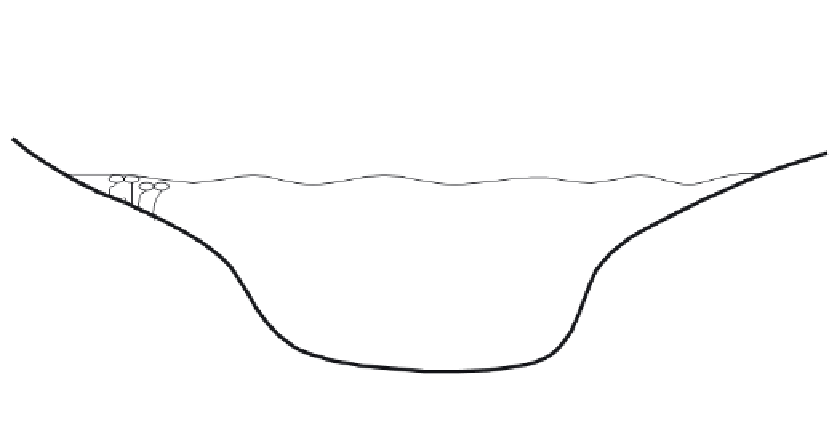Environmental Engineering Reference
In-Depth Information
Several cases of endemism have yet to be explained. For example, ben-
thic copepods show high levels of endemism in South American wetlands
(Reid, 1994). However, it is not known why such endemism occurs in these
wetlands and not in those of North America, such as the vernal pools in
California in which the Anostroca are diverse.
SHORT-TERM FACTORS INFLUENCING LOCAL DISTRIBUTION
OF SPECIES
Numerous factors, including species interactions, productivity, species
introductions, habitat type, and colonization, control how many and what
types of species occur in a specific environment. Here, I discuss coloniza-
tion and habitat type. Later, I focus on species introductions. Species in-
teractions are discussed in Chapters 18-20, and productivity is discussed
in Chapters 16 and 17. Factors related to colonization are dispersal abil-
ity, competitive ability, and distance from sources of colonists when new
habitats form. Several areas of ecological theory relate to these concepts.
Habitat type and diversity are interrelated. The habitat serves as a tem-
plate on which evolution can occur. Organisms must specialize in a type of
habitat to be evolutionarily successful, and habitats are partitioned by scale
and other physical attributes. For example, a lake has several distinct types
of habitats that are dominated by different groups of organisms (Fig. 10.6).
Changes in these habitats can influence biodiversity. For instance, decreases
in woody debris on lakeshores associated with residential development are
expected to lead to decades-long decreases in biodiversity (Christensen
et al.,
1996). Similarly, decreases of benthic habitat diversity in streams lead
to decreases in macrophyte diversity (Baattrup-Pedersen and Riis, 1999).
Within taxonomic groups, different species also specialize in specific habi-
tat types, which has been well documented for many plants and animals,
Pelagic zooplankton
protozoa
rotifers
cladocera
copepoda
phantom midges
Neuston
protozoa
springtails
water spiders
water mites
water striders
Littoral water column
water mites
rotifers
cladocera
water boatmen
phantom midges
Profundal benthos
gastrotrichs
flatworms
nematodes
oligochaetes
true midges
Littoral benthos
hydra
bryozoans
leeches
ostracodes
true midges
amphipods
FIGURE 10.6
Representative invertebrate groups as a function of habitat in a small lake
(redrawn from Thorp and Covich, 1991c).









Search WWH ::

Custom Search